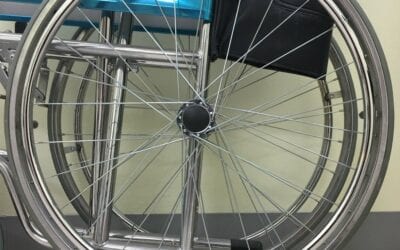The FAA must overhaul its aircraft flight data collection to preserve flight data. Make it available even if the black boxes are damaged, unrecoverable, or erased. The NTSB can still fully investigate incidents and accidents.
 In recent months, we’ve read about too many “near misses” at U.S. airports from runway incursions. Had they not been “misses,” many passengers and crew members would have died. It is time that airlines preserve flight data.
In recent months, we’ve read about too many “near misses” at U.S. airports from runway incursions. Had they not been “misses,” many passengers and crew members would have died. It is time that airlines preserve flight data.
Each of the incidents are being investigated by the National Transportation Safety Board (NTSB). They’ve raised alarm bells among the traveling public and the US government. Part of the concern is that sometimes, due to existing regulations, or lack thereof, a complete investigation of incidents by the NTSB may not be possible.
The NTSB’s investigation of recent incidents is seriously hampered by many of the planes’ cockpit voice recordings being erased.
The most inexcusable involved the voice recorder for Alaska Airlines Flight 1282 where a door plug blew out a short time after take-off. It was overwritten before investigators had a chance to retrieve the recording.
In 2023, I wrote about another one of those incidents in my column: FAA plane incident data and testimony must be preserved and honest. The incident was at John F. Kennedy International Airport (JFK). An American Airlines Boeing 777 crossed the runway where a Delta Boeing 737 took off. The Delta jet was able to stop just six seconds from disaster.
After the near miss, the American Airlines plane flew to London. The seven-hour flight caused the cockpit voice recording of the incident to be overwritten. The recorders have just a two-hour capacity, which the pilots undoubtedly knew. Now we can never directly know what was being said in the cockpit. It might explain how the pilots turned wrong and taxied their aircraft onto a live runway.
The FAA needs to implement its proposal to increase the cockpit voice recorder capacity to 25 hours to prevent its quick erasure.
The FAA is aware of the problem. Also in 2023, Jennifer Homendy, Chair of the NTSB, in testimony before the Committee on Transportation and Infrastructure of the U.S. House of Representatives, said in part,
“In addition to the need for all revenue passenger-carrying aircraft to be equipped with recorders, we have also been concerned about current FAA requirements for cockpit voice recorders (CVRs). Current FAA regulations require 2-hour CVR recording capability and provide guidance to the flight crew on how to safeguard CVR data after an accident or incident. Despite this, valuable CVR data continues to be overwritten and therefore unavailable for safety investigations …”
Six years ago, the NTSB recommended that the Federal Aviation Administration (FAA) require CVRs to have a minimum 25-hour recording capacity. After recent near misses, the FAA finally agreed to direct the increased cockpit voice recording capacity.
That’s a start in the right direction. Still, I don’t think it goes nearly far enough to preserve the data necessary to investigate aircraft incidents properly.
I propose a five-point plan to overhaul the FAA requirements for flight data collection to help the NTSB thoroughly investigate aircraft incidents and accidents.
I have a modest proposal to ensure that the NTSB and other aircraft investigatory agencies across the globe have the data they need to make the skies safer.
In the tech industry, data backup best practices use the 3–2–1 rule to preserve data. The guiding principle of the 3–2–1 rule is to save multiple copies of data on different media and locations to ensure the data isn’t lost. The FAA needs to apply the 3–2–1 rule’s guiding principles to preserve both flight data and cockpit voice recorders’ data so that incidents and accidents can be adequately and thoroughly investigated. It’s the only way to prevent them from happening in the future.
The FAA must require improvements to the black boxes and install a cloud-based, real-time, secure backup of aircraft black box data.
First, the inflight data system of black boxes needs some easy-to-implement improvements. Second, a cloud-based, real-time backup of the two black boxes must be implemented. With recent advances in satellite Internet systems for aircraft, airlines can now reliably transmit large amounts of data through a secure broadband Internet connection to land-based data servers. That way, the essential data in an aircraft’s black boxes can be fully backed up in a safe location on land, preserving the data in case the black boxes are damaged or unrecoverable.
Malaysia Airlines Flight 370 disappeared about 10 years ago. It illustrates the need for improvements. The Boeing 777–200 disappeared with its 239 passengers and crew. Despite some debris from the plane being found in various locations, the main wreck was never found. Nor were its black boxes.
Adding to Flight 370’s wreckage recovery problems was that, according to maintenance records, at least one of the black boxes’ locator beacons, used to find the recorders, had a battery that expired over a year before the flight. As it is, their batteries are only required to last for 30 days after a crash. The dead battery likely never worked for a few days, making locating the black boxes virtually impossible.
Better data on Malaysia Airlines fatal crash and the recent incidents in the sky and at airports would mean better investigations.
In both the Malaysia Airlines and American Airlines examples, had a land-based, cloud, real-time, remote data collection system been deployed, we would likely know what happened during both flights. Knowing what happened could save lives in the future.
Here’s a modest, commonsense proposal to preserve flight data for better investigations.
I have the following modest proposal to overhaul the FAA aircraft data collection requirements. It’s a commonsense approach that in part uses the 3–2–1 rule guiding principles.
1. Follow rules recommended by the NTSB and finally accepted by the FAA. All voice recorders must have a recording capacity of at least 25 hours. This is in line with what has been required for the flight data recorder for more than 20 years.
2. Require flight data and cockpit voice recorders to be tested regularly to ensure they work correctly.
3. Require that the black box locator beacon batteries can power the beacons for a minimum of 120 days to better assist in locating the black boxes and the airplane.
4. Require the airlines to remotely back up all the data collected by the black boxes. This should be in real-time, via a secure connection on the Internet. It should be stored on land-based cloud servers to preserve the data for 30 days to transfer it to the NTSB when requested.
5. Require the airlines to continuously monitor and collect the GPS position, speed, and altitude of planes. This should be in real-time, via a secure connection on the Internet, from the time the planes leave their departure gate until they arrive at their arrival gate. In addition to the black box data, preserve the data for 30 days for transfer to the NTSB when requested.
These requirements should be adopted immediately.
The FAA should adopt these five requirements immediately and, hopefully, other national aviation regulatory agencies across the globe will do the same. They will enable agencies like the NTSB to investigate incidents and accidents to make our skies safer fully.

READ ALSO:
Rid the skies of drunk passengers who too often abuse and assault
Passengers brace for the big airline summer squeeze travel
After many years working in corporate America as a chemical engineer, executive and eventually CFO of a multinational manufacturer, Ned founded a tech consulting company and later restarted NSL Photography, his photography business. Before entering the corporate world, Ned worked as a Public Health Engineer for the Philadelphia Department of Public Health. As a well known corporate, travel and wildlife photographer, Ned travels the world writing about travel and photography, as well as running photography workshops, seminars and photowalks. Visit Ned’s Photography Blog and Galleries.



